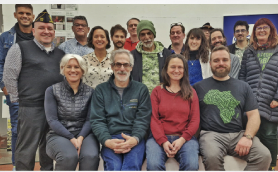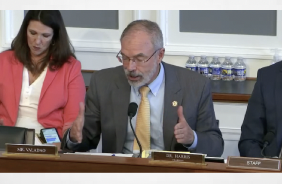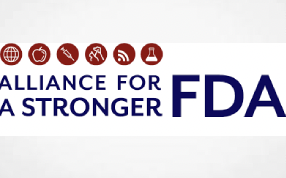Authored By: Arundati Dandapani
According to Vividata’s National Cannabis Consumer Study, 70% of consumers are not sure they know the difference between THC and CBD. Moreover, quality remains the top criterion in selecting a cannabis product for purchase. How are companies setting the standards for quality and how are we researching consumers to understand their experiences with cannabis products accurately and ethically? This post explores the manufacturing and research standards to consider when conducting research studies with cannabis.

Product Quality in Manufacturing
At an HIV Community Cannabis Education event held in Toronto, a cannabis company proudly declared their company had not had a single product recall to date. Product recall happens when a product is defective, damaged or does not meet the customer’s expectations causing the product to be called off the shelf. This “zero recall” standard, the team said, was attributed to the fact that their cannabis product standards with regard to food safety and health was high and involved documentation of over 100 pages.
High product quality relies on a true understanding of the entire supply chain, from seed to sale with sanitized processes and quality checks including the creation of well-detailed preventative control plans that are in place to avoid instances of hazards like contamination or other public safety risks. These are the responsibility of the manufacturer.
Setting Standards for Cannabis Research Studies
When companies, individuals or groups conduct or commission research of any kind on cannabis product one or more of its various forms (edibles, topicals, beverages, etc.) among human subjects, legal knowledge of the laws outlined the Cannabis Act should be distributed to all participants ahead of time. In fact, it is encouraged that respondents are tested on their knowledge of cannabis to ensure they understand the ins and outs of the product they are being researched for or with.
Respondent experience must be central to the research exercise. With cannabis, every user has a different experience, but the law that applies to everyone is the same. This is also why it’s so challenging to create standards that accommodate for the medical as well as the recreational standards in the conduct of consumer research around cannabis. The guidelines below detail some prime facets to consider in order to maintain high quality control standards in the cannabis research space:
o Compliance with the Cannabis Act and the MRIA Code of Conduct including referencing the guidelines listed in the Pharmaceutical Research section.
o Respondent checks: Age gates are in place to ensure compliance, and if underaged, then medical licenses must be checked.
o Product testing: The products have been through rigourous checks and audits by Health Canada and display the legal seal.
o Technology powered research: Virtual clinical trials and other accelerated technologies that mix the potential of new technologies with cannabis to create research insights quickly and more accurately, are being classified as Cannabis 3.0, triggering new innovations and improved data quality through better user experiences.
o Medical conditions: A panel of doctors must be present at the time of any product research to ensure no adverse effects lessen or damage the health of participants.
o 24-hour follow up: All respondents must be followed up with after a period of 24 hours to see that no negative consequences have occurred since the research.
An individualized approach to research must be adopted when the product is being tested for consumers. With cannabis research studies, companies might appear to follow different standards of benchmarking product quality, making it difficult for customers to judge products without trying them. While the medical legal market has been commercially legal since 2013, the adult-use or recreational market only became legal in October 2018, with the complete legalization of all product forms happening in October 2019.

Some industry insiders and veteran consumers will argue that legal market cannabis has fallen short on expectations with price-point, being 62% more expensive than black market cannabis according to Statistics Canada. Canada’s largest syndicated study of cannabis consumers reveals that price remains a top barrier to legal cannabis consumption.
As legal cannabis is still new in Canada, DIY methods and products are rampant. The gatekeepers of standards are constantly challenged when the market draws a false line between efficiency and quality. For individualized products, standards are new and developing, even as the industry is fast-moving and dependent on an intuitive honour code across the supply chain for effective quality control. An example that best demonstrates the need for quality control is around the lack of information about what cannabis is made of, what its effects and health benefits (where applicable) might be, and how to understand consistency, potency, and dosage in consuming (or trading) medically and recreationally.
Instituting Dialogue and Collaboration
There are differences in standards and best practices between micro-cultivation and commercial growing according to the NACPT Pharma College that advocates for quality and accredited expertise at every point in the supply chain. One of the goals with an industry as fast-moving as cannabis (disproportionate to the pace of information flow) should be to bring both Health Canada and the licensed producers (LPs) in ongoing communication with one another, and this can happen best through an association that works to protect the industry.
Some companies are proud of not having had a single product recall since their setup. This is owed to the intensive process and documentation in place, popularly dubbed “GXP” encompassing the gamut of standards including GMP, GPP, GACP and other international manufacturing and production standards. Others have faced the wrath of their consumers, media, and everyone in their supply chain networks for not complying with Health Canada’s standards and the Cannabis Act. Cannabis brands still have a long way to go as consumers understand the full legal market ecosystem.
Modelling the Future of Cannabis Studies with Care
Cannabis companies have a relatively empty legal canvas to fill, when compared with other industries, and the category’s future success will draw from the gold standards of ancillary industries including (and not limited to) technology, logistics, transportation, data analytics and market intelligence, packaging, and the media among others. A large proportion of new users’ information is gained from the media, posing an important responsibility for online outlets and websites to be posting the most accurate and well-researched cannabis insights for consumers.

Arundati Dandapani is Chief Editor of MRIA-ARIM, Canada’s foremost association for marketing research and intelligence professionals, and Founder of Generation1.ca, a cross-sectoral resource for Canada’s newest residents. A well-published researcher and insights storyteller, she advises businesses and non-profits across a range of industries, was named a 2020 AAPOR Burns Bud Roper Fellow and has earned industry honours like the 2020 QRCA Young Professionals Grant, and the Inaugural GRIT Future List Award in 2019.
Originally published By: https://mria-arim.ca/Blogs/8863343

















